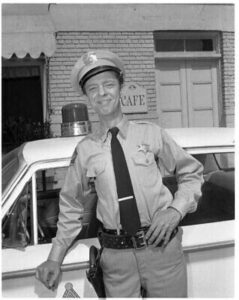
Good Guy Andy Griffith Was a Raging Monster in His First Movie Role
While Andy Griffith is best known as the charming sheriff of Mayberry on The Andy Griffith Show, he first found success in the film industry playing a much darker, more complicated character. Following a career as a stage actor, Griffith’s first movie role was in Elia Kazan’s 1957 film, A Face in the Crowd. Griffith portrays a man named Larry Rhodes who is discovered by a radio journalist, Marcia (Patricia Neal), in an Arkansas jail. Marcia records him performing a song and finds that Rhodes becomes an instant hit with the listeners. Taking him to the station, Rhodes was given his own radio program, which quickly skyrocketed in popularity. Now dubbed “Lonesome” Rhodes, Griffith’s character struggled to manage his newfound fame with humility or grace. The film is a biting satire of celebrity influence and the corruption of wealth and power. Griffith, playing a character who undergoes a transformation from a charming drifter to a raging, arrogant performer, gives a powerful performance that sits in stark contrast to his lovable sitcom persona.

The film features some of Griffith’s best work, and remains an important story for how it addresses the ways in which media can be weaponized to influence audiences. While A Face in the Crowd may not be as well remembered as Kazan’s seminal works, On the Waterfront and East of Eden, the film has revealed itself to be an incredibly prescient work, one that predicted media and political trends which have culminated in a great shift in American cultural discourse. The film, now a part of the Criterion Collection, is being reappraised on the strengths of the lead performance and thematic content, which dolls out a number of warnings America unfortunately has yet to heed.
Lonesome Rhodes is a complicated character. While the Andy Griffith most audiences know and love was a kindly character, most noted for his fatherly qualities and ability to hand down life lessons, A Face in the Crowd shows a different side to Griffith’s acting talents. In an archived newspaper clipping from 1956, Griffith explained that he found the transition from stage acting to performing on film difficult. The main factor was that, in a theatrical production, the emotional arc of the character played out in real time. Griffith compared this to the process of film acting, saying “… in making a movie, you have to be able to turn your emotions on and off like tap water. I found that hard to do.” To quickly find the intense emotions required for Lonesome Rhodes ‘ frequent outbursts, Griffith requested some old chairs be brought to the set, and he would destroy them in order to prepare for his scenes.
